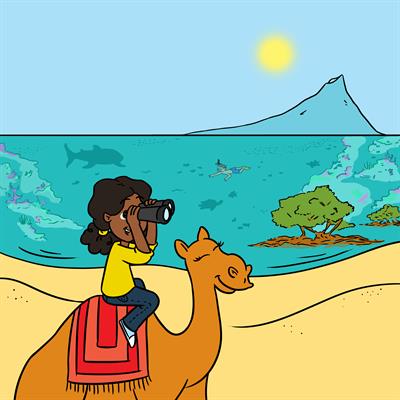
地球上一个陌生的地方:红海未来海洋的一个模型
集合编辑器
基督教Voolstra鲁本科斯塔的观点
289485年的观点参与部分万博manbetxapp最新
提交截止日期
关闭
manbetxapp在线登录
关于这个集合
我们的海洋正在改变。升高的温室气体导致地球平均温度的增加(或全球变暖),导致了我们现在所知的气候变化。这反过来有很大影响海洋和生物生活在他们。鉴于海洋变化如此之快,海洋生物受此影响怎么样?他们能适应吗?我们如何研究这些适应性?我们应该从哪里开始呢?
在非洲和亚洲,中东地区,是一个巨大的海水质量连接到印度洋南端。这个水体叫红海,有人说因为红褐色的存在在其水域蓝藻,也有人说因为红颜色代表“南”(地中海文明)在古代。其地理位置使其成为一个独特的环境温度和盐度高(盐在水中溶解的量),创建一个复杂的环境梯度从北到南二千多公里的长度。尽管有这些苛刻,几乎陌生的条件,红海是大型绿色红树林和海草,超过一千种鱼类(其中许多独特的红海),数百种珊瑚和无数的无脊椎动物。在微观层面,我们天天新发现,这样我们的知识多样性的细菌、微藻,病毒不断增加。
但如果它是如此难以维持生活在红海,所有这些生物如何仍然繁荣吗?这是许多科学家正在试图回答的问题研究非生物因素,如温度、盐度和营养的红海会影响其生物(或生物)。此外,由于它的极端条件下,红海也可以作为一个独特的实验室研究和学习对未来气候变化对生态系统的影响:它代表了时间机器,让我们展望未来的热带海洋和让我们了解生物生长在极端环境。
本系列的目的是探索当前知识我们在红海的生物多样性和环境变化的适应性。从珊瑚礁和生物之间的互利关系(共生),海草和卤水池,我们渴望学习生活可以找到一种方法来繁荣即使几率似乎反对它。更重要的是,通过了解红海的现状,我们可以预测生物从其他地区将如何适应快速变化的气候。
你愿意接受这个集合?
研究人员感兴趣的提交这个集合,请咨询我们的作者指导方针和检查你所有的必需品包括之前提交



















